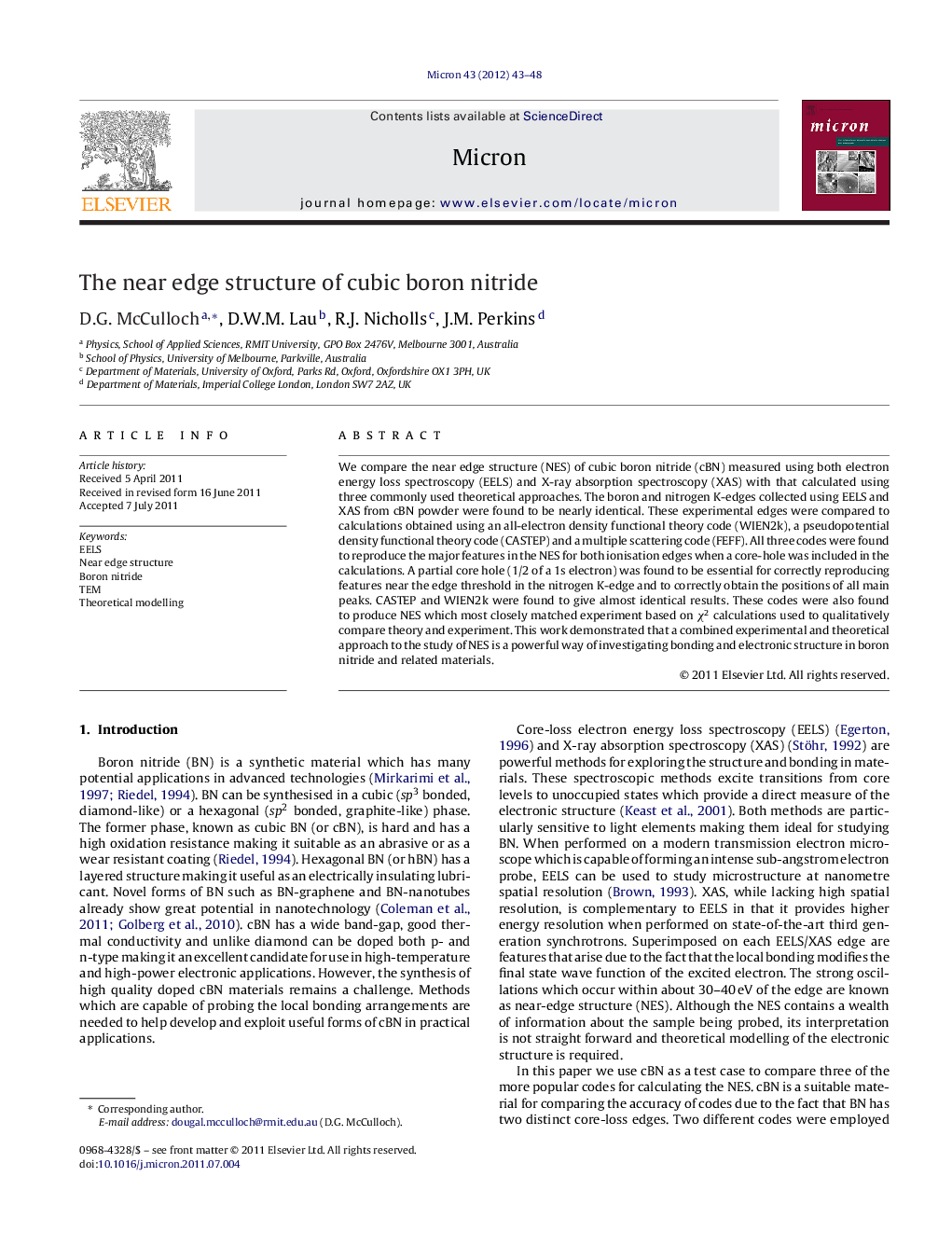| Article ID | Journal | Published Year | Pages | File Type |
|---|---|---|---|---|
| 1589452 | Micron | 2012 | 6 Pages |
We compare the near edge structure (NES) of cubic boron nitride (cBN) measured using both electron energy loss spectroscopy (EELS) and X-ray absorption spectroscopy (XAS) with that calculated using three commonly used theoretical approaches. The boron and nitrogen K-edges collected using EELS and XAS from cBN powder were found to be nearly identical. These experimental edges were compared to calculations obtained using an all-electron density functional theory code (WIEN2k), a pseudopotential density functional theory code (CASTEP) and a multiple scattering code (FEFF). All three codes were found to reproduce the major features in the NES for both ionisation edges when a core-hole was included in the calculations. A partial core hole (1/2 of a 1s electron) was found to be essential for correctly reproducing features near the edge threshold in the nitrogen K-edge and to correctly obtain the positions of all main peaks. CASTEP and WIEN2k were found to give almost identical results. These codes were also found to produce NES which most closely matched experiment based on χ2 calculations used to qualitatively compare theory and experiment. This work demonstrated that a combined experimental and theoretical approach to the study of NES is a powerful way of investigating bonding and electronic structure in boron nitride and related materials.
► We compare the near edge structure (NES) of cubic BN obtained experimentally with that obtained using three popular theoretical codes (CASTEP, WIEN2k and FEFF). ► We found that the inclusion of core holes in the theoretical calculations was essential to produce a good fit to experiment. ► It was found that CASTEP and WIEN2k produced almost identical results and were superior at reproducing the experiment compared to FEFF.
